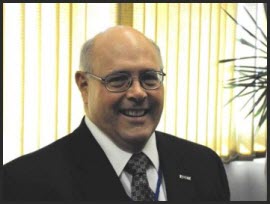RedVector
RV-W101617

Mr. Coulbourne has written articles for journals and given presentations, seminars and webinars for homebuilders, engineers, architects, building officials and homeowners on high wind and flood design and coastal construction issues and has taught as an Adjunct Faculty member in the College of Engineering at the University of Delaware. He was the primary author and Project Manager for FEMA 55: Coastal Construction Manual. He has co-authored books and journal articles on high wind design issues and strategies including Guides to the Wind Load Provisions of ASCE 7-05 and ASCE 7-10, an ATC Design Guide on Basic Wind Engineering for Low-Rise Buildings and a book on Engineering Investigations of Hurricane Damage for ASCE. He is a Fellow of the American Society of Civil Engineers (ASCE) and a Fellow in the Structural Engineering Institute of ASCE. He actively participates on the ASCE engineering standards committees for ASCE 7 Minimum Design Loads for Buildings and Other Structures, ASCE 24 Flood Resistant Design and Construction, and a new standards committee for improving tornado wind speeds using the EF Scale.
10/16/2017: LIVE INTERACTIVE WEBINAR, Structural Masonry Materials Encore Presentation, Monday, October 16, 2017, 12pm-1pm, Eastern
Course Objectives
- Identify the various types of masonry materials used in building construction including brick and stone.
- Identify the materials that must be used to build masonry structures including mortar and steel.
- Recognize the material properties of masonry important in the design of masonry structures.
- Identify those characteristics important to structural resistance to large loads such as wind, earthquakes, flood and blast, and important to fire resistance.
SUBJECT MATTER EXPERT: William Coulbourne, P.E., F. ASCE, F. SEI

Mr. Coulbourne has a BS in Civil Engineering from Virginia Tech and a Masters in Structural Engineering from the University of Virginia. He is a licensed Professional Engineer in three states. He is a national expert in wind and flood mitigation and has been involved in FEMA Mitigation Assessment Teams and natural hazard damage assessments for 20 years. He has been involved as an investigator or Project Manager with every major hurricane, tornado and flood since 1995, and was involved in a building collapse caused by terrorism and a tsunami in Japan. He has investigated failures and mitigation design techniques for thousands of buildings including residential structures, schools used as shelters, hospitals, and other critical facilities. He holds Certifications in Structural Engineering and Building Inspection Engineering.
Mr. Coulbourne has written articles for journals and given presentations, seminars and webinars for homebuilders, engineers, architects, building officials and homeowners on high wind and flood design and coastal construction issues and has taught as an Adjunct Faculty member in the College of Engineering at the University of Delaware. He was the primary author and Project Manager for FEMA 55: Coastal Construction Manual. He has co-authored books and journal articles on high wind design issues and strategies including Guides to the Wind Load Provisions of ASCE 7-05 and ASCE 7-10, an ATC Design Guide on Basic Wind Engineering for Low-Rise Buildings and a book on Engineering Investigations of Hurricane Damage for ASCE. He is a Fellow of the American Society of Civil Engineers (ASCE) and a Fellow in the Structural Engineering Institute of ASCE. He actively participates on the ASCE engineering standards committees for ASCE 7 Minimum Design Loads for Buildings and Other Structures, ASCE 24 Flood Resistant Design and Construction, and a new standards committee for improving tornado wind speeds using the EF Scale.
Mr. Coulbourne is a member of the Florida International Wall of Wind Technical Advisory Panel, a member of an Expert Panel for the Texas Department of Insurance investigating methods for determining hurricane damage caused by wind and water, a member of ABET’s Engineering Accreditation Commission Executive Committee, a Board Member of the American Association of Wind Engineering, and a newly elected member into the Academy of Distinguished Alumni of the Via Department of Civil Engineering at Virginia Tech.

